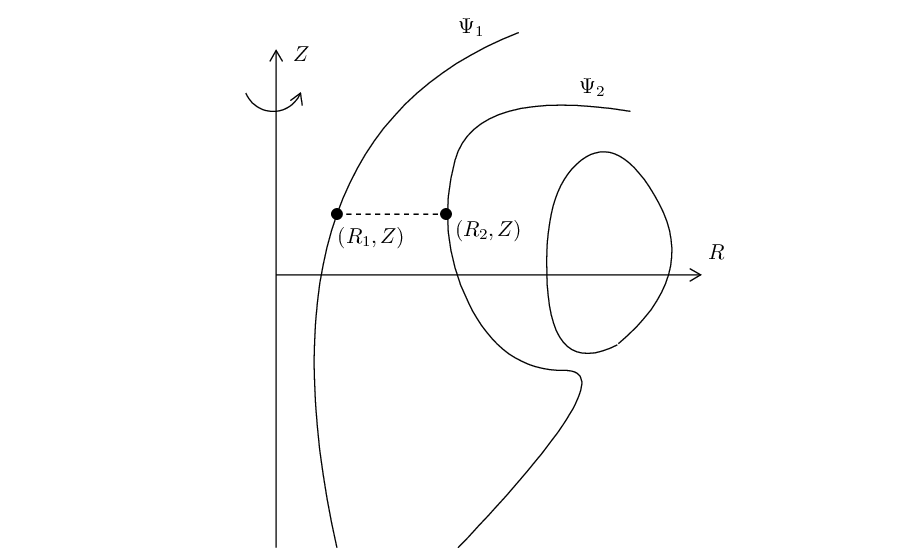
Note that Ψ is defined by Ψ = RAϕ, which is just a component of the vector potential A, thereby having no obvious physical meaning. Next, we try to find the physical meaning of Ψ, i.e., try to find some simple algebraic relation of Ψ with some quantity that can be measured in experiments.

In Fig. 2, there are two magnetic surfaces labeled, respectively, by Ψ = Ψ1 and Ψ = Ψ2. Using
Gauss’s theorem in the toroidal volume between the two magnetic surface, we know that the poloidal
magnetic flux through any toroidal ribbons between the two magnetic surfaces is equal to each other.
Next, we calculate this poloidal magnetic flux. To make the calculation easy, we select a plane
perpendicular to the Z axis, as is shown by the dash line in Fig. 1. In this case, only BZ contribute to
the poloidal magnetic flux, which is written (the positive direction of the plane is chosen in the
direction of  )
)